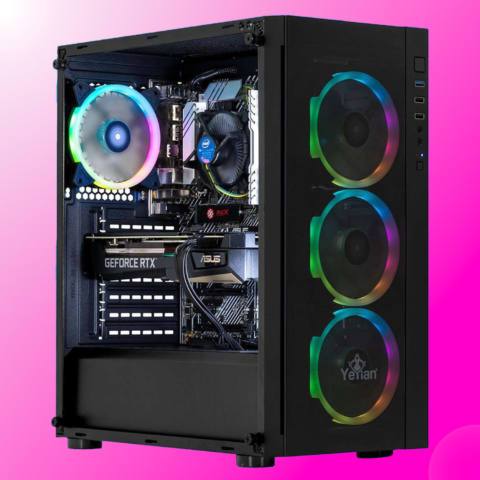Intel’s new Core Ultra 200S don’t have much going for them in terms of gaming performance, but they’re generally pretty good at sipping power in games. Compared to Raptor Lake’s cavernous hunger for energy, it’s a major plus. Now the chip giant is getting ready to launch Arrow Lake processors with even lower power demands.
Strictly speaking, the demand from the processor won’t actually be lower in these new models, just that their power limits will be significantly reduced from the 125 W Ultra 9 285K, Ultra 7 265K, and Ultra 5 245K. The details on the new Arrow Lake variants were posted by X user Momomo_us (via Videocardz) who’s well-known for getting hold of such information ahead of schedule.
What we’re getting are non-K and T variants of the existing Core Ultra 200S chips. For example, the 285K will be joined by a Core Ultra 9 285 and 285T, with the former having a 65 W TDP and the latter just 35 W. Everything else—core count, cache, number of PCIe lanes—will still be the same.
Well, the clock speeds will be lower, and in the case of the 285, the base P-core will be 2.5 GHz compared to the 285K’s 3.7 GHz; the 285T will be right down at 1.2 GHz. There’s no word about how the reduced power limits will affect the boost clocks but we can take a reasoned guess at them, based on how Intel set the clocks for the likes of the Core i9 14900T.
Where the full-fat 14900K has P-core clocks of 3.2 GHz (base) and 6.0 GHz (max turbo), the T variant is 1.1 and 5.5 GHz respectively. For reference, the non-K 14900 is 2.0 and 5.8 GHz. Since Arrow Lake is more energy efficient than Raptor Lake, we might not see quite as large a decrease in the peak boost clocks, but we’ll have to wait for the official launch to know for sure.
The leaked details also point to some additions to the Core Ultra 5 range, with the 225 (and iGPU-less 225F) sporting just 10 cores, base clocks of 3.3 GHz, 20 MB of L3 cache, and a 65 W TDP.
Not that any of these forthcoming chips are aimed at PC gaming enthusiasts. Traditionally, T-models have been sold to manufacturers who need capable but ultra-low power chips for embedded computers, and the non-K versions are normally snapped up by system integrators looking to save a few bucks here and there.
Given that I don’t recommend anyone buys a normal Core Ultra 200S (the 245K isn’t bad but there are better options for gaming), you’re not going to see me ever suggesting one should rush out for a non-K chip.
Yes, they’ll be cheaper than the K-models but quite frankly, who cares when they’ll have second-tier gaming performance at a brand-new price?
Videocardz also reckons Intel will launch the new range in January, probably at CES 2025, and we should see its more affordable B860 motherboard chipset announced at the same time.
You never know, Team Blue might do an AMD and significantly drop its prices to undercut the sales of Zen 5, especially the mighty Ryzen 7 9800X3D. Does anyone fancy taking a punt on that happening?

Best gaming PC: The top pre-built machines.
Best gaming laptop: Great devices for mobile gaming.






